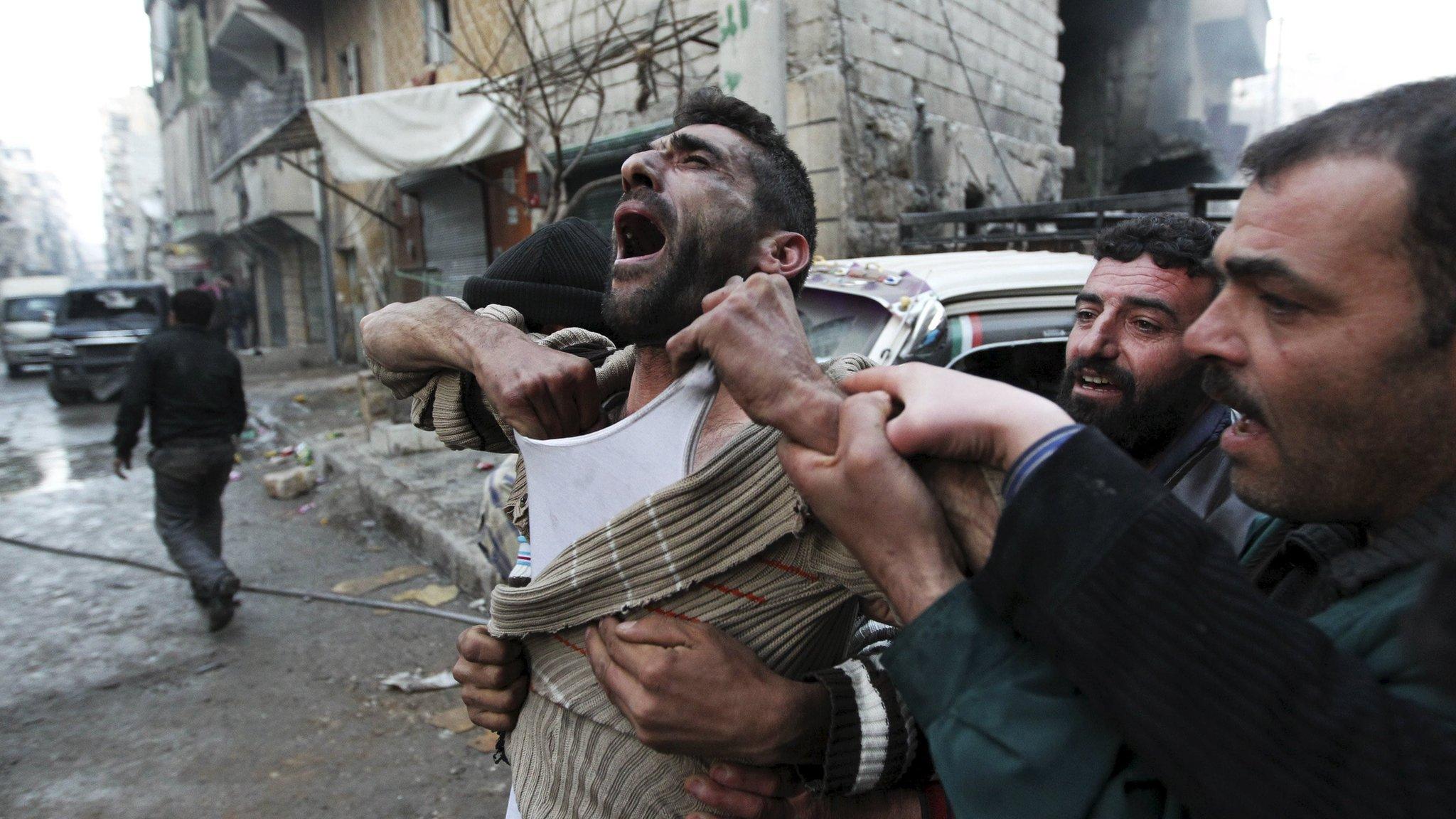Syria war: Why are Western states considering air strikes?
- Published

Western powers are believed to be considering air strikes against Syria in response to a suspected chemical attack near Damascus.
The White House says it is continuing to assess intelligence and talk to its allies on how to respond while France's President Emmanuel Macron says he will decide "in due course" whether to take action.
In the UK, Cabinet ministers have agreed the use of chemical weapons in Douma must not "go unchallenged".
Location of suspected chemical attacks, 7 April


What is the crisis about?
The call for action comes after a suspected chemical attack on the rebel-held town of Douma, just outside Damascus, on Saturday, which killed dozens of people, according to opposition activists, rescue workers and medics.
France's president says he has unspecified proof that the Syrian government attacked the town in the Eastern Ghouta without.
Chemical weapons attacks have taken place in Syria before. Last year, the US retaliated with cruise missiles after at least 80 people died in Khan Sheikhoun, in a chemical attack the UN later blamed on the Syrian government.
President Bashar al-Assad's government - which receives military backing from Russia - has denied involvement in any chemical attack, calling the reports "fabricated".
Russian Foreign Minister Sergei Lavrov said the latest suspected attack was staged by foreign agents.
Russia has also warned the US that launching air strikes could spark a war between the two countries.
What happened in Douma?
Dozens of people were killed when government aircraft dropped bombs filled with toxic chemicals on the formerly rebel-held town on Saturday, according to Syrian opposition activists, rescue workers and medics.
Activists from the Violations Documentation Center (VDC), an opposition network which records alleged violations of international law in Syria, reported two separate incidents of bombs believed to contain toxic substances being dropped by the Syrian Air Force., external
1) First chemical attack

The first alleged incident occurred at approximately 16:00 local time and saw a bakery on Omar Ibn Al-Khattab street in north-western Douma targeted, the VDC said.
A rescue worker from the Syria Civil Defence told the organisation he had smelt chlorine in the air after the strike.
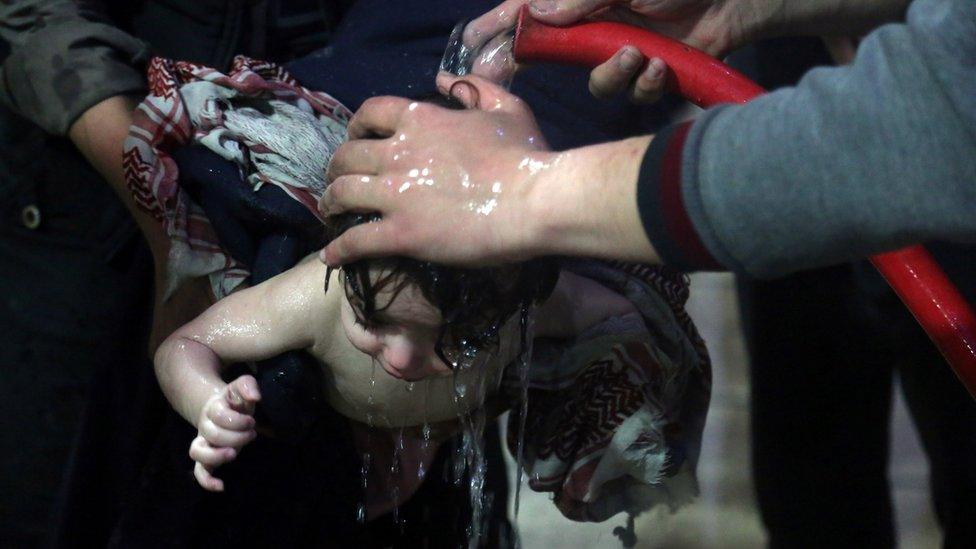
Patients were hosed down with water
"We later discovered the bodies of people who had suffocated from toxic gases," he added.
"They were in closed spaces, sheltering from the barrel bombs, which may have caused their quick death as no-one heard their screams."
3) Second chemical attack

The VDC said the second incident took place on Martyrs' Square - east of the first attack - at approximately 19:30.
The Syrian-American Medical Society (Sams) said more than 500 people had been found with symptoms "indicative of exposure to a chemical agent, external" after the attacks.
On Thursday, unnamed US officials said they had obtained blood and urine samples from victims which had tested positive for chlorine and a nerve agent, according to NBC News.
Independent chemical weapons inspectors are en route to the Eastern Ghouta area to look for evidence. They are expected to arrive on Saturday.
What military presence is in the region?
Among other assets, the US has the guided-missile destroyer the USS Donald Cook in the Mediterranean and the US Navy has a sizeable number of fighter jets on carriers in the Gulf.
A strike group, headed by the aircraft carrier USS Harry S Truman, is also heading to the Mediterranean, the US Navy has confirmed.


In addition, the Americans have long-range subsonic B-52 bombers, which they have deployed and used on targets in the region before.
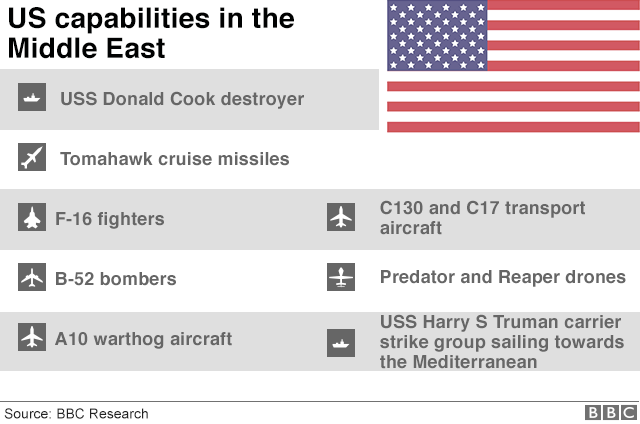

Russia has a contingent of warplanes based in Syria, which it has used in support of the Syrian government.
It also has warships and support vessels deployed in the Mediterranean. Some are armed with cruise missiles. Anti-ship missiles stationed in Syria could also attack Western vessels in the Eastern Mediterranean.
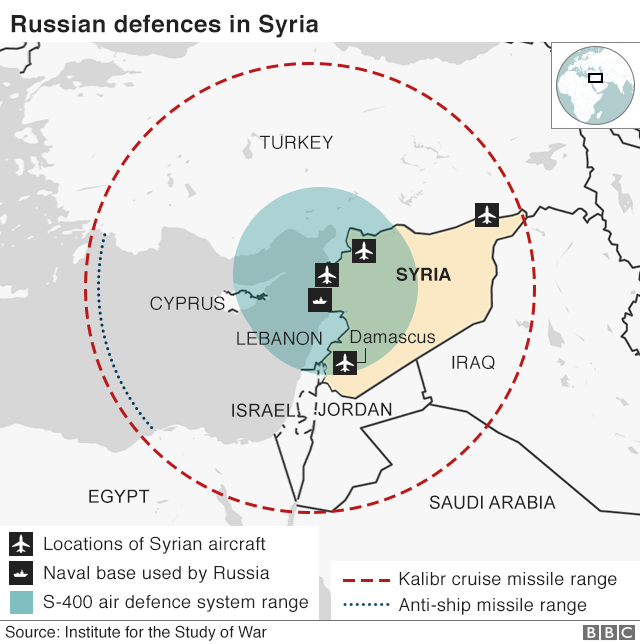

It could bring into play the advanced, but as yet untested, S-400 air defence system.
The multi-layered anti-aircraft system was deployed to Syria after a Russian jet was downed there but has so far only served as a deterrent.

How the S-400 system works


Steps 1- 4 show how the S-400 system's radar tracks objects, assesses potential threats and launches missiles to destroy the targets. It can guide up to 12 missiles simultaneously, engaging up to six targets at once.

The UK has eight supersonic Tornados stationed in Cyprus and RAF Typhoons have also been operating in the region. The aircraft use Paveway IV laser-guided bombs and Brimstone missiles to target strikes.
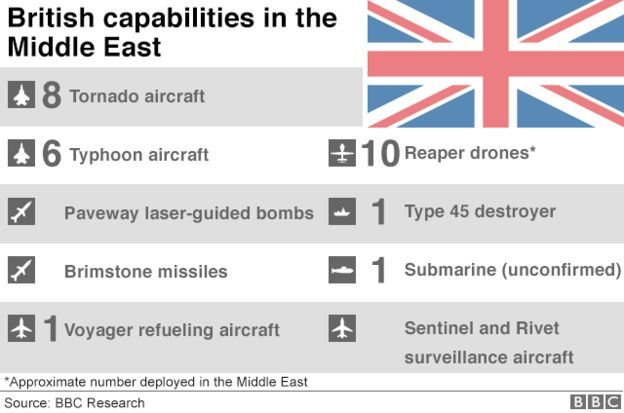
Britain also has a fleet of unmanned aircraft in the Middle East, including about 10 Reaper drones. The UK's Rivet Joint surveillance aircraft are also available.

For France, the frigate Aquitaine, which is equipped with cruise missiles, is currently in the Mediterranean, according to French media.
France has also stationed several Mirage and Rafale fighter jets in Jordan and the United Arab Emirates.
With its nuclear-powered Charles de Gaulle aircraft carrier undergoing refitting, France has deployed sailors and aviators on board the US aircraft carrier USS George HW Bush for training and joint operations.
- Published12 April 2018
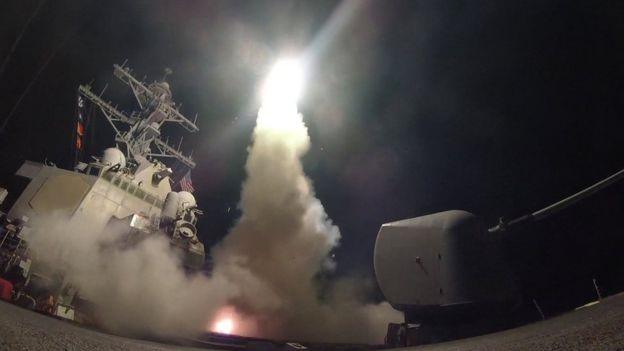
- Published12 April 2018
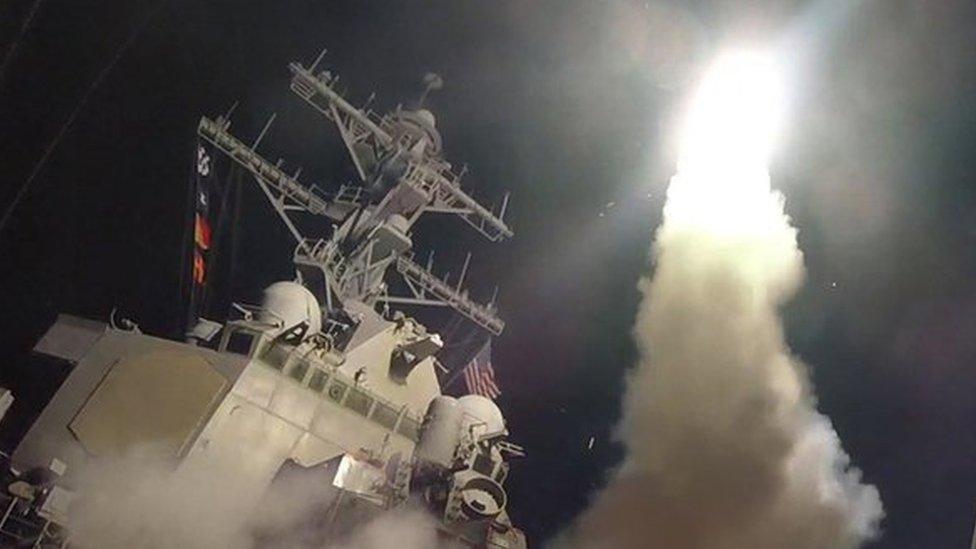
- Published10 July 2018

- Published2 May 2023
